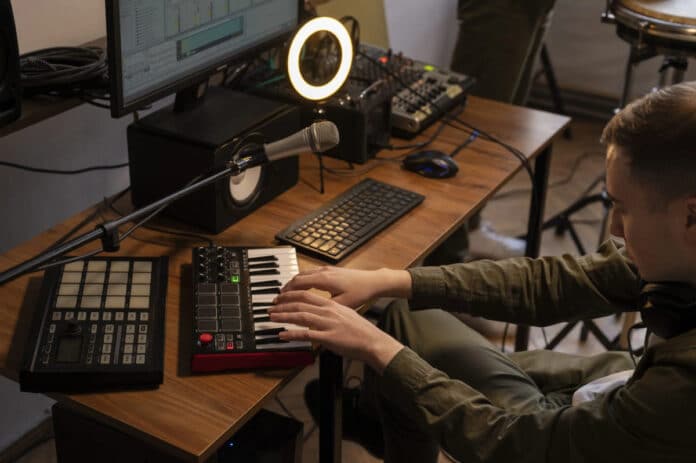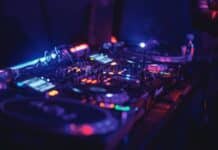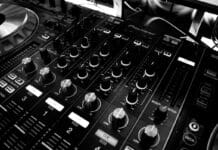
EDM will put you in a good mood and get you all pumped up for whatever comes your way. The beat is so energetic and liberating.
The way different sounds and rhythms are layered together to create a cohesive and exciting piece of music is truly impressive.
If you are interested in recording your own EDM tracks but don’t know where to start then you are in luck because this beginner’s guide is here to help you out!
Whether you’re a complete newbie or have some experience with recording, this guide will provide you with all the information you need to get started.
First things first, you’ll need a Computer and a Digital Audio Workstation (DAW) to record and produce your electronic dance Music.
Some popular options include Ableton Live, FL Studio, Logic Pro X, Studio One, and Pro tools.
Once you have your DAW set up, you’ll want to start experimenting with different sounds and samples. Use free packs from Unison Audio.
There are plenty of free sample packs available online that you can use to get started. You can also invest in some quality VST plugins to add more depth and complexity to your tracks.
One important thing to keep in mind when recording EDM will be to pay attention to the arrangement of your tracks.
EDM is all about building up tension and releasing it in a big drop, so you’ll want to make sure your tracks are structured in a way that builds anticipation and excitement.
Another thing is to use automation to add movement and variation to your tracks. This can be as simple as automating the volume or panning of a particular sound, or as complex as automating the filter cutoff or modulation of a synth.
It is also worth noting that this guide is suitable for any Beginner with a home recording studio or Music studio space.
Let us dive deep yet break things down bit by bit since we are working with beginners.
You Will Need A Computer
One of the most important equipment you will need to record an Electronic Dance music track is a computer.
As a beginner, you will have a hard time choosing between a Desktop or a laptop and sometimes even whether to use a PC or a Mac.
The kind of choice as regards what kind of computer you will end with should be based on your preference. As any of the computers will be of great use.
However, you may need to consider the following before purchasing a computer for recording EDM.
A High-speed hard drive (SSD preferably), RAM size( 8GB – 16b and above is okay), and a large display with high resolution.
Choose A DAW
The Digital Audio Workstation is what you will use to record, edit, and produce EDM. It is an important software as far as production is concerned.
There are plenty of DAWs out there to choose from. Pro Tools, FL Studio, Logic Pro, Studio One, Ableton Live, and a lot more.
Research these DAWs and choose one for yourself. Consider their compatibility with your computer. For example, Logic Pro is only Compatible with a Mac.
You may also consider choosing a Digital Audio Workstation that you love and is popular in your environment.
Also read: Five Best EDM Recording Studios In New York
Virtual Instruments
The Virtual instrument is another software component you will need to make a great EDM even as a beginner.
Virtual instruments will help you recreate the sound of a musical instrument with a computer and a DAW.
Virtual instruments fall into two parts (Library and effects). It is operated inside a DAW. However, some are installed separately.
Komplete 11 is an example of a virtual instrument. It is also popularly used by EDM producers to create original sounds and rhythm.
To put it straight, virtual instruments will help you manipulate and simulate the sound of your EDM.
Other Equipment you will need as a Beginner to Record EDM
You must have heard that it is quite expensive to record and produce clean audio. However, as a beginner, you don’t need to buy all the equipment to record your first EDM track.
If you have a computer, DAW, and virtual instruments then you are set to record your first EDM track.
A decent sound card, MIDI controller, microphones, headphones, and speakers will also take it to the next level. Making you more than enough ready as a beginner to record and produce your EDM.
Your sound card popularly known as an Audio interface will take care of your audio signals to and from your computer.
The Midi controller will help you navigate and manipulate sound in real-time. A Midi controller with keys and pads is of great advantage.
A quality microphone will help you record clean vocals. To achieve the best result, a condenser mic is often recommended.
To get an accurate reproduction of sound, a good pair of headphones and studio monitors are ideal for you.
Recording Vocals For EDM
The vocal is an outstanding element in a track. As a matter of fact, it is the first recognized element and also the element that is memorable.
If there is a singing part in your Electronic Dance Music then you will have to get acquainted with vocal sample packs.
There are a lot of Vocal samples available online. Every EDM producer has one or more of these vocal sample packs.
However, play around with these vocal sample packs on your recording to recreate uniqueness and originality.
Again, endeavor to use an adequate microphone for your vocal recording. A condenser mic is a good choice.
Effect for vocals
The compressor is essential for EDM vocals. It flattens the signal by making the quiet part louder and the loud part quiet. Enabling consistency and equality in the vocals.
The EQ will help you adjust frequencies from the lowest to the highest, making your vocal shine.
Adding reverb and delays to your EDM vocals is another great effect. It makes the vocal sound bigger and wider. That sounds like fun, right? Try it out.
Auto-Tune is another popular effect to consider while recording vocals for EDM. It creates an artificial sound and can also be used to correct pitches.
Also read: Simina Grigoriu Returns To OFF Recordings With New Single ‘Actuary’
Experiment with some samples.
A lot of EDM producers use samples. But you will need to experiment by creating them yourself.
It is also not a bad idea if you download these samples and arrange them into a track.
Develop a consistent strong rhythm in your entire piece of music. You can turn on your metronome to guide you.
Creates your bass lines with chord roots. Then layer it with a variety of sounds as well as space for grooves.
Throw in some interludes with percussion and melodic instruments into the synchronized piece. You will be amazed with your EDM.
Conclusion
If you have followed this guide till here, then rest assured that with some patience and creativity, your first EDM recording will be incredible.
Who says Beginners can not make incredible records? With This beginner’s guide on how to record EDM, you will be surprised by what you will come up with.
Go ahead, turn on your computer, load your DAW, and proceed to record your first EDM track.








